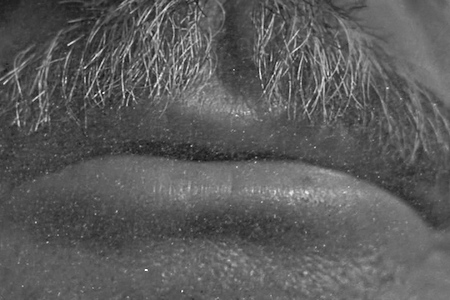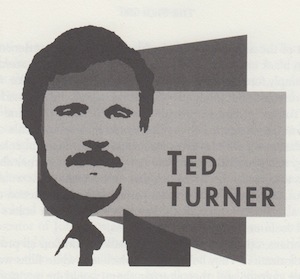
Born: November 19, 1938, Cincinnati, OH
I’m going to colorize Casablanca just to piss everybody off.
—Ted Turner
In 1970, young Ted Turner used profits from his father’s billboard-advertising company to purchase a financially troubled UHF television station in Atlanta, Georgia. Within three years, WTBS was one of the few truly profitable independent stations in the United States, and by 1975, it was the first to broadcast “superstation” programming by satellite to a national audience. After Turner launched the CNN twenty-four-hour news format and Turner Network Television in 1988, he became a media mogul, reaping huge advertising revenues and influencing the viewing habits of millions of people around the world.
His appetite for swallowing companies continued in the mid-1980s. Along with the MGM/UA Entertainment Company he purchased for half a billion dollars in 1986 came the entire Metro-Goldwyn-Mayer archival collection of four thousand films—a stellar library of rare prints, as well as many unseen and many established classics. Seeking to make these films more appealing to television fans, and therefore more profitable, Turner invested heavily in a process that electronically colorizes old films through the use of computers. The era of colorization ushered in the most fevered debates about creative ownership and film preservation since the French legal wranglings over film authorship in the 1930s. Poised to control a significant portion of the world’s most enduring classics, Turner alone may determine the future of cinema’s past.
Editor’s note: Fifteen years later, the essays of Scott Smith’s 1998 book, The Film 100, are being republished here on Keyframe, not as the last word on cinema—as much has changed in film in the past two decades–but as a starting point for further discussion. Please join the conversation. To view the entire Film 100 list and find links to all the essays, please visit Reintroducing the Film 100.
The heart of the argument was whether the viewing experience was, and should be, in black and white or whether the limitations of yesterday’s technology was simply forcing audiences to watch stories without color. Consumer testing had revealed that many people did not watch movies made in black and white. Turner wished to provide these films with tints and dyes that would approximate the actual colors that would have been visible on the set. He argued that many of these films would have been made in color if issues of technology and prohibitive costs had not prevented it. Turner also went to great lengths to convince his detractors that expert technicians would be consulting photos, storyboard sketches, set paintings and production notes, and other archival materials in order to determine the proper colors for backgrounds and costumes before tinting the films.
Film historians, critics, professional filmmakers and fans all protested the process of colorization. They believed that black-and-white films were part of the collective culture and that altering them would be revisionist. They explained that color film stock had indeed been available to some MGM directors who simply preferred the range of moods and emotional overtones achieved best through black-and-white photography; for example, the expressionistic lighting of film noir classics would be rendered ineffectual in color. Furthermore, they argued that it would inappropriate to “restore” colors by referring to old photos of set pieces, costumes and props that audiences were never intended to see in color.
But Turner proceeded anyway. On September 9, 1986, the first colorized film, the James Cagney musical Yankee Doodle Dandy (1942), was shown on WTBS. Violent protests came from every corner of the film community. Retired directors, including Billy Wilder and Orson Welles, took offense at the idea of altering their works. Contemporary directors, notably Woody Allen, argued that many films were deliberately made in black and white, like In Cold Blood (1967), and therefore would not be presented in the spirit of their creators if colorized. Welles’s dying wish was to have his lawyers “keep Ted Turner and his goddamned Crayolas away from my movie.” In a gesture of goodwill, Turner, who owns the rights to Citizen Kane, entered into a legal agreement that protects Kane from anything that might alter its original black-and-white imagery.
Turner abandoned his colorization project in 1993 when it became clear that it was an expensive personal indulgence that failed to earn favor with viewers. By that time, nearly 230 movies had been tinted.
One result of the colorization debate was a renewed interest in film preservation. A black-and-white print cannot be colorized unless it is of sufficient quality to handle chemical treatment. Perhaps partly as a way to soften his public image as a destroyer of film, Turner made the decision to fund large restoration projects. Many of Lon Chaney’s films, unseen for decades, had at the time of this writing recently been preserved in beautiful 35mm prints.
A footnote to the debate was a 1996 French court ruling that Turner had violated the rights of director John Huston by televising a colorized version of The Asphalt Jungle (1950), a film that Huston had expressly wished to remain unaltered. It was the first decision that stated that “colorization of a black-and-white movie violated the moral rights of its authors.”
To read all the republished articles from ‘The Film 100,’ go to Reintroducing the Film 100 here on Keyframe.




